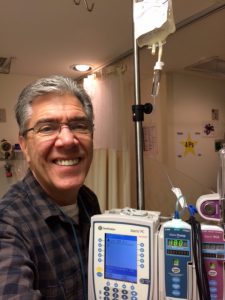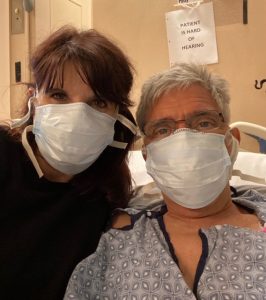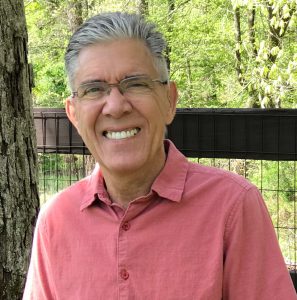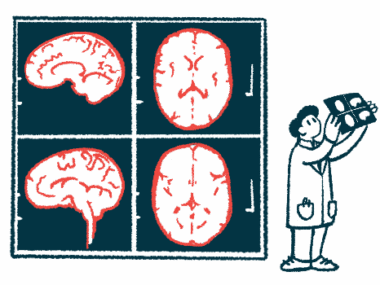I Feel Like a Cat With 9 Lives
Written by |

I am a 66-year-old male with Fabry disease, which causes many adverse and potentially life-threatening symptoms. As I look back on some of my major life events, I often think about the saying, “A cat has nine lives.” I’ve had many encounters due to both Fabry disease complications and other events in which I nearly lost my life. I feel like I’m the cat.
The first time I thought, “I nearly just lost my life,” I was 17 years old. I was riding home from school in a friend’s car and the brakes failed. We flew through a stop sign across a four-lane divided highway and nearly collided with a fully-loaded dump truck. I don’t know if the truck missed us by a few inches or a couple feet, but it missed us. Luckily, no one was hurt.
My next near miss happened on Sept. 11, 2001, while working as an Army strategic planner at the Pentagon. Some of the aircraft that crashed into the Pentagon during the terrorist attack ended up 75 feet away from me, two floors beneath the desk where I was working.
In October 2007, I flew to Washington, D.C., to retire from the Army at Fort Myer in northern Virginia. I had to complete my final retirement paperwork. My wife, Angela, and I had already moved to North Carolina using my remaining military leave allotment. On the plane, I knew something was wrong, so when we landed, I went to the nearby Fort Myer health clinic.
When I arrived at the clinic, I asked the check-in nurse to write down my wife’s phone number. Then, I went into a coma that lasted a few days. I was transferred to a nearby regional hospital.
When Angela arrived from North Carolina a few hours later, she was told I had bacterial meningitis, and it was unlikely I would live through the night. At Angela’s insistence, I was transported to the Walter Reed Army Medical Center in Washington, D.C., where my health began to slowly improve.
While being treated at Walter Reed for my life-threatening bacterial infection, I received my first implantable cardioverter defibrillator (ICD) due to frequent irregular heartbeats. Next, I was diagnosed with Guillain-Barre syndrome, which can also be life-threatening. My hospital visit lasted 60 days. I miraculously survived the two concurrent life-threatening illnesses.
A year later, I was afflicted with a second life-threatening bacterial infection called bacteremia. I was hospitalized, and again survived a dangerous illness.
Over the next nine years, many of my Fabry disease symptoms got worse. However, the disease has presumably progressed more slowly because of the biweekly intravenous enzyme replacement therapy I’ve now received for over 18 years. My heart and lung function have declined, but my kidney function has remained fairly stable.
In October 2017, I was two-thirds of the way through a cardiac rehabilitation program after surgery to repair my mitral valve when my ICD delivered 13 painful shocks in 35 minutes to try to stabilize my erratic heart rhythm. In the 10 years since it was implanted, my ICD had never shocked me. I didn’t think I was going to make it to the hospital.
The emergency medical team couldn’t touch me until the powerful shocks subsided. Soon, however, I was in the hospital continuing to fight for my life. After a couple weeks in the hospital, I returned home with a new medication to stabilize my heart rhythm. I experienced significant post-traumatic stress disorder symptoms for a couple years after my traumatic near-death experience.
Not long after my 2017 episodes of irregular heartbeats and ICD shock therapy, I began talking to the Duke Heart Center transplant team. Initially, I wasn’t a suitable candidate for a heart transplant. I returned to the Duke Heart Center for periodic evaluations.
By mid-September of this year, after my heart function declined significantly in a short period of time, my transplant cardiologist said it was time to come to the Duke intensive care unit and stay until I received a new heart. I was extremely fortunate to receive a new heart two weeks later.
Everything went very well, and I walked out of Duke eight days later. Now, 11 weeks after my transplant, I am recovering very well. Full recovery will take some time.
While some people may think I’ve been very unfortunate to have had all of these very worrisome illnesses and events, I believe I am extremely fortunate. With so many good outcomes from all these potentially tragic events, I am thankful to have an opportunity to live several more good years with improved health. With our newfound hopes of an end to the COVID-19 pandemic in sight, I look forward to enjoying the rest of my nine lives with my new heart and a renewed lease on life.
***
Note: Fabry Disease News is strictly a news and information website about the disease. It does not provide medical advice, diagnosis, or treatment. This content is not intended to be a substitute for professional medical advice, diagnosis, or treatment. Always seek the advice of your physician or other qualified health provider with any questions you may have regarding a medical condition. Never disregard professional medical advice or delay in seeking it because of something you have read on this website. The opinions expressed in this column are not those of Fabry Disease News or its parent company, Bionews, and are intended to spark discussion about issues pertaining to Fabry disease.









Leave a comment
Fill in the required fields to post. Your email address will not be published.